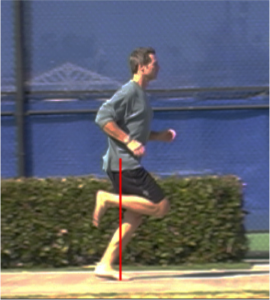By James Maska, SPT
“Way before we were scratching pictures on caves or beating rhythms on hollow trees, we were perfecting the art of combining our breath, mind, and muscles into fluid self-propulsion over wild terrain.” – Christopher McDougall
 Humans have been accomplished endurance runners since the time we were forced to hunt and gather our food for survival. It wasn’t until the late 1970s that the running shoes we see today began to surface. Before this time, humans essentially ran in thin-soled, flat footwear, or even on our bare feet.
Humans have been accomplished endurance runners since the time we were forced to hunt and gather our food for survival. It wasn’t until the late 1970s that the running shoes we see today began to surface. Before this time, humans essentially ran in thin-soled, flat footwear, or even on our bare feet.
Over the last few years, there has been plenty of discussion regarding barefoot and “minimalist” running. It is obvious that running barefoot, for most of us, is out of the question. After relying on our shoes for most of our lives, our feet would not be able to withstand that kind of wear and tear. So the question becomes: Is a minimalist shoe right for me?
If you go outside and run barefoot, you will see that you land much more softly, and likely on the middle or ball of your foot. When you use traditional cushioned running shoes, you’ll find yourself landing on your heel with each stride. In this position, your foot lands typically lands in front of your knee. With a midfoot or forefoot strike, your feet tend to land under your hips, and your body leans slightly forward as a result. You’ll also run with a shorter stride.
A Harvard University study shows that forces are three times greater when the foot initially hits the ground when landing on your heel versus on your forefoot.1 Another study has shown that reducing your stride length by 10% decreases risk for a stress fracture for runners who run up to 49 miles per week.2 Perhaps the most telling research to this date shows less force going through the knee and hip joints with a forefoot strike.3 Although the joints of the lower body are under less stress, there is an increase in force at the ankle with a forefoot strike, and caution must be taken to avoid stressing this area too much during a transition.
There is no research to say running form is better than another; however, studies are beginning to show the positive effects of running with a more “natural” stride. If you’re tired of running injuries and haven’t had luck getting rid of them, perhaps a change in form is something to think about. With the help of a PT, you can get yourself on the path toward running without pain, whatever that path may be.
Sources:
- Lieberman, D. E., Venkadesan, M., Werbel, W. A., Daoud, A. I., D’Andrea, S., Davis, I. S., . . . Pitsiladis, Y. (2010). Foot strike patterns and collision forces in habitually barefoot versus shod runners. Nature, 463(7280), 531-535. doi: 10.1038/nature08723
- Edwards, W. B., Taylor, D., Rudolphi, T. J., Gillette, J. C., & Derrick, T. R. (2009). Effects of stride length and running mileage on a probabilistic stress fracture model. Med Sci Sports Exerc, 41(12), 2177-2184. doi: 10.1249/MSS.0b013e3181a984c4
- Williams, D. S., Green, D. H., & Wurzinger, B. (2012). Changes in lower extremity movement and power absorption during forefoot striking and barefoot running. Int J Sports Phys Ther, 7(5), 525-532.










